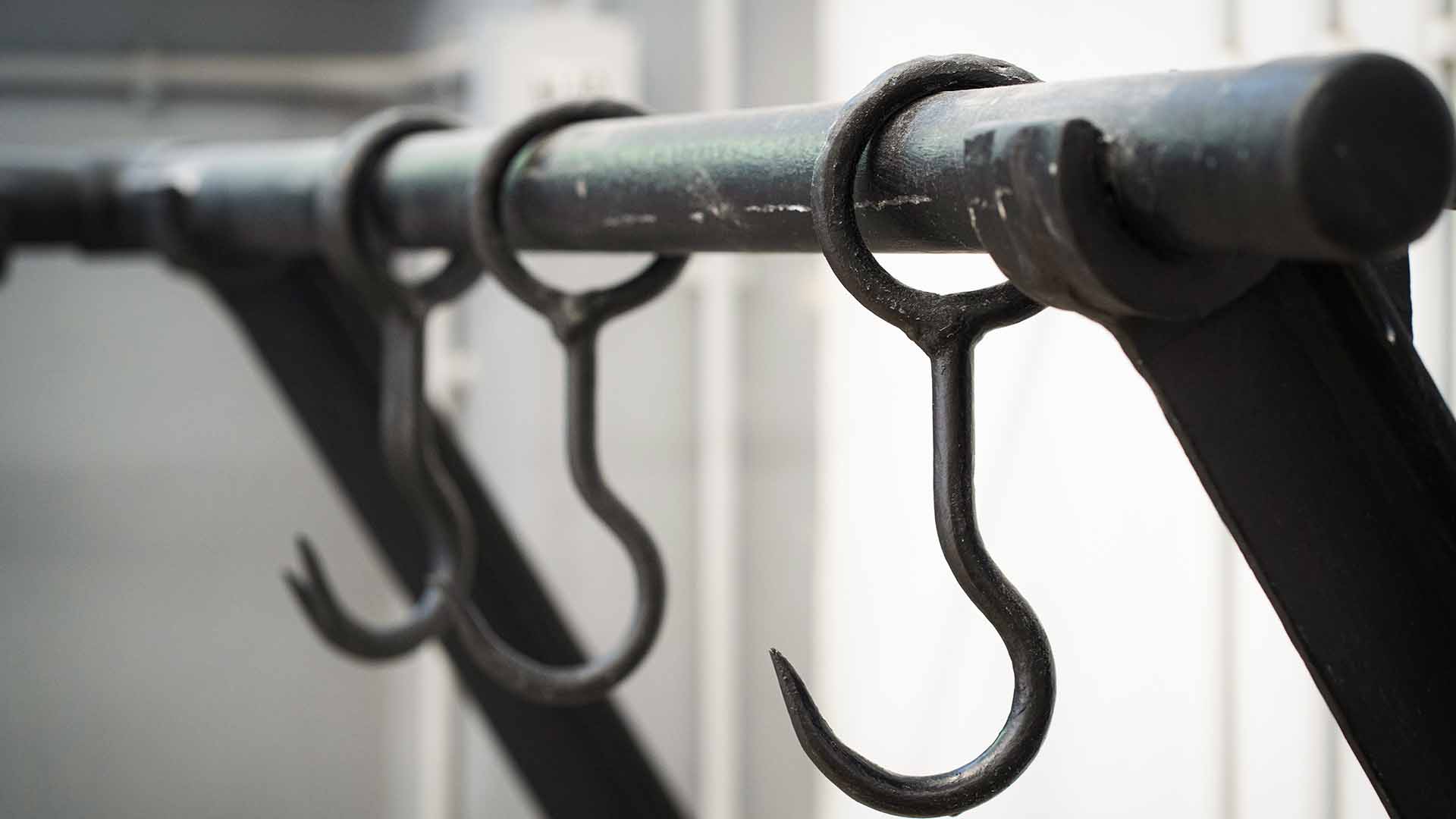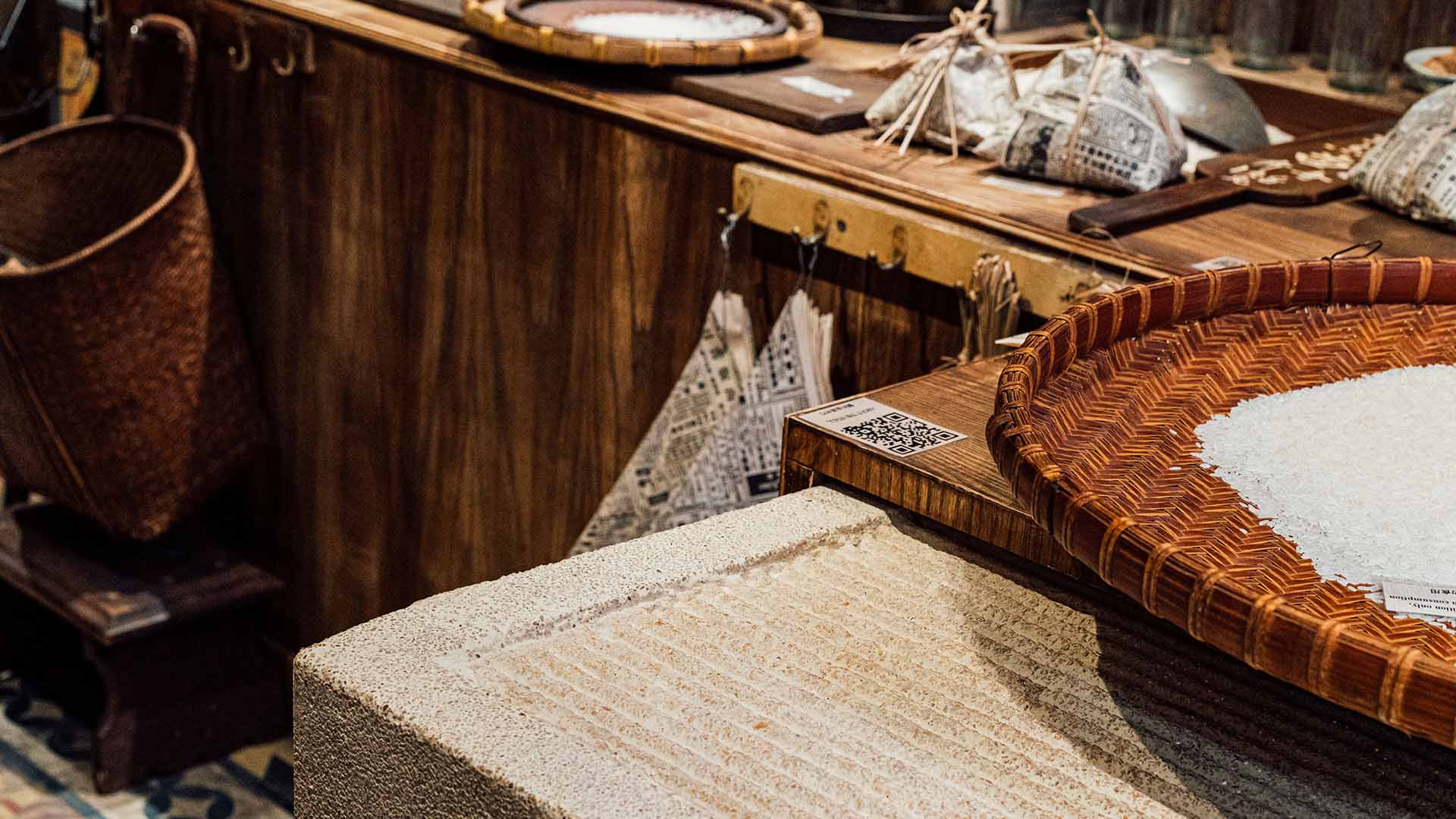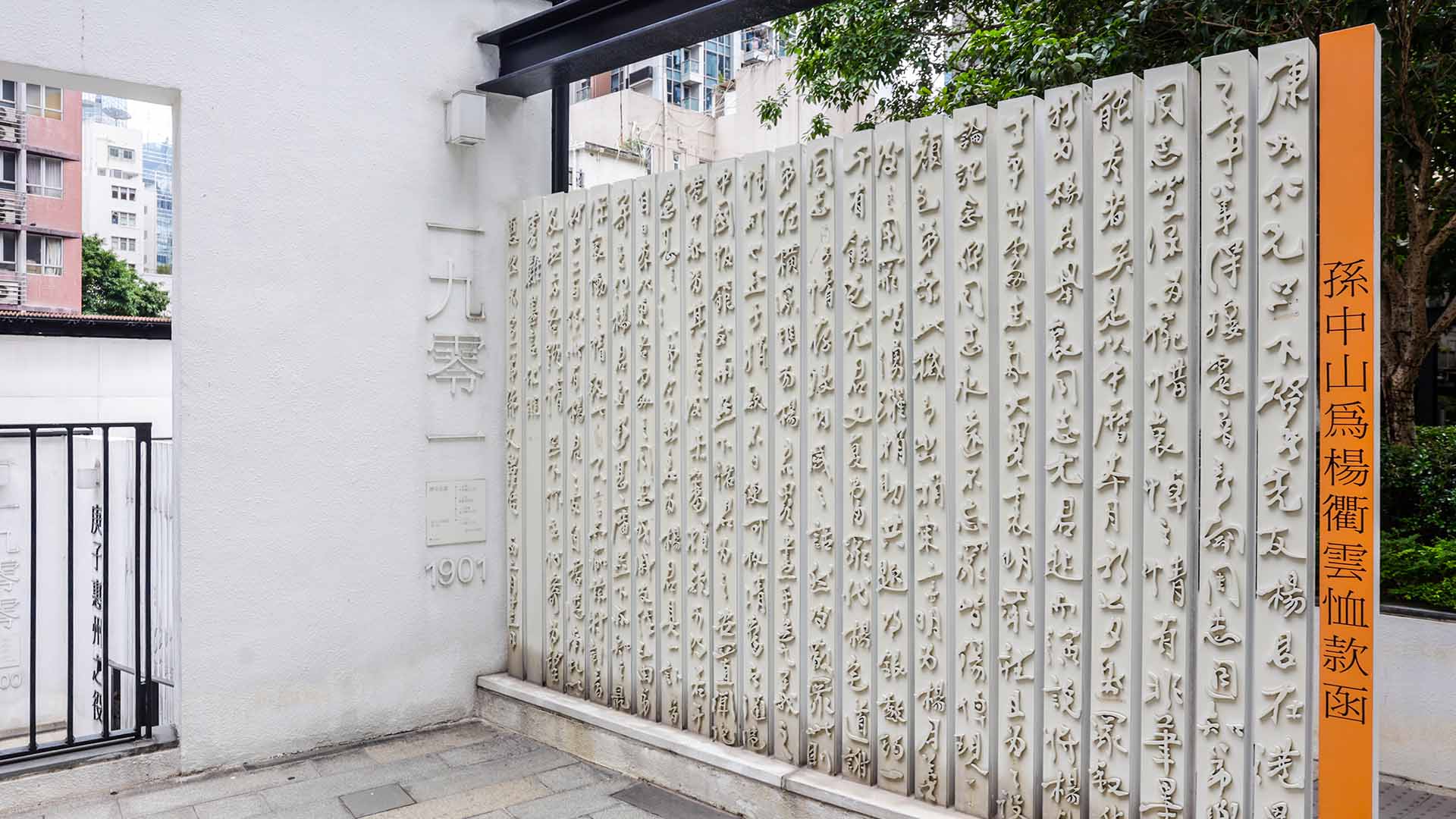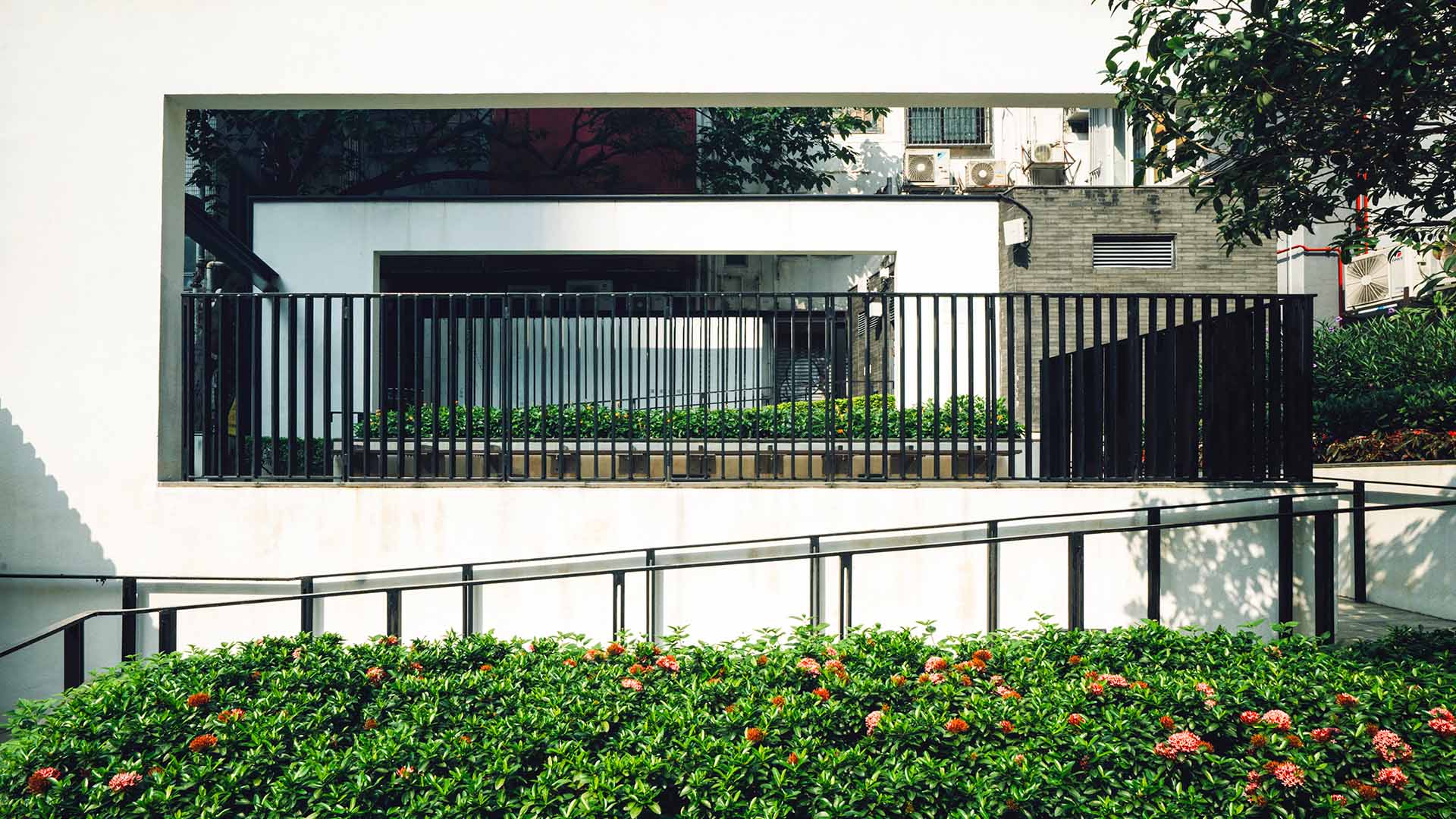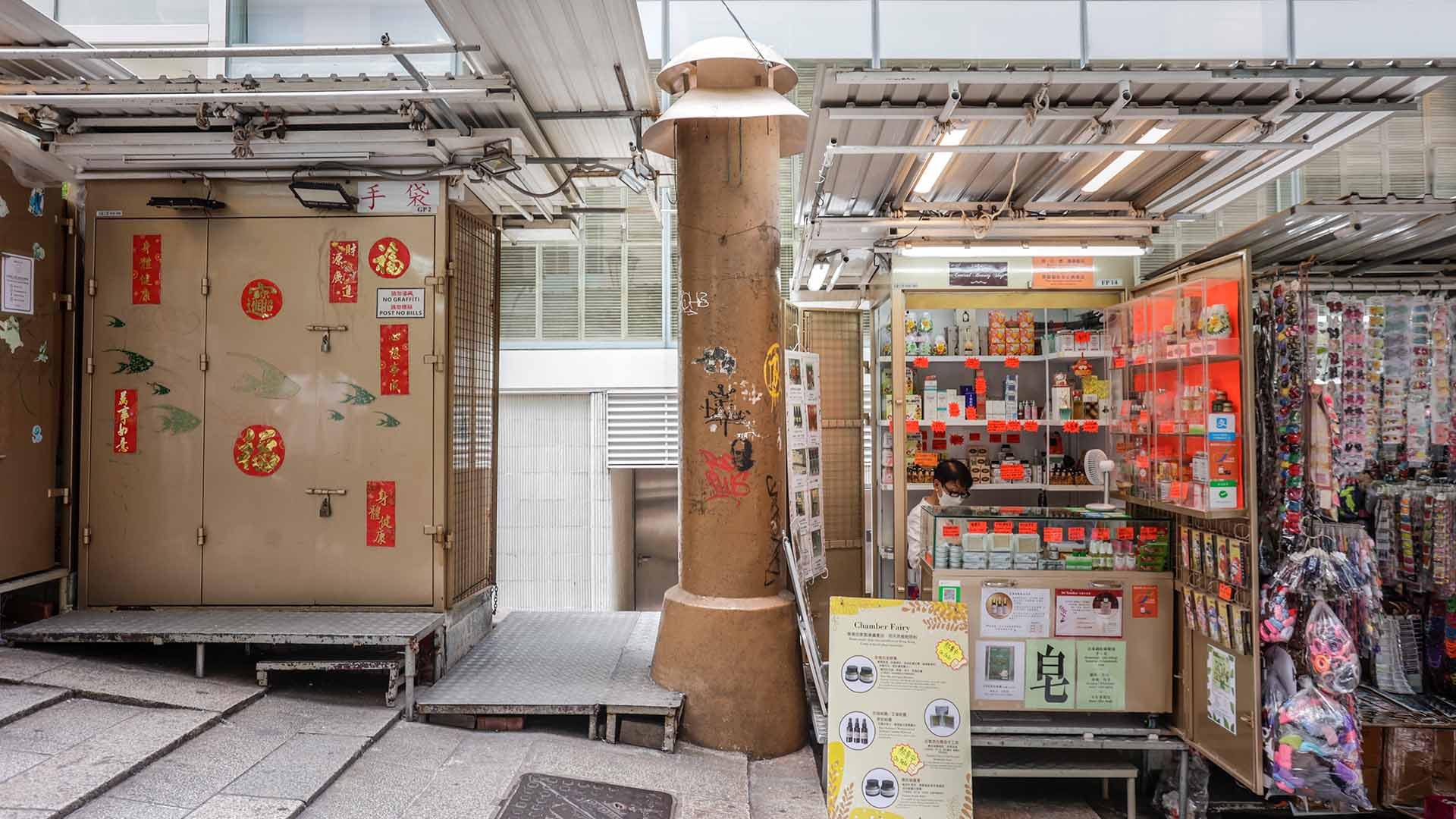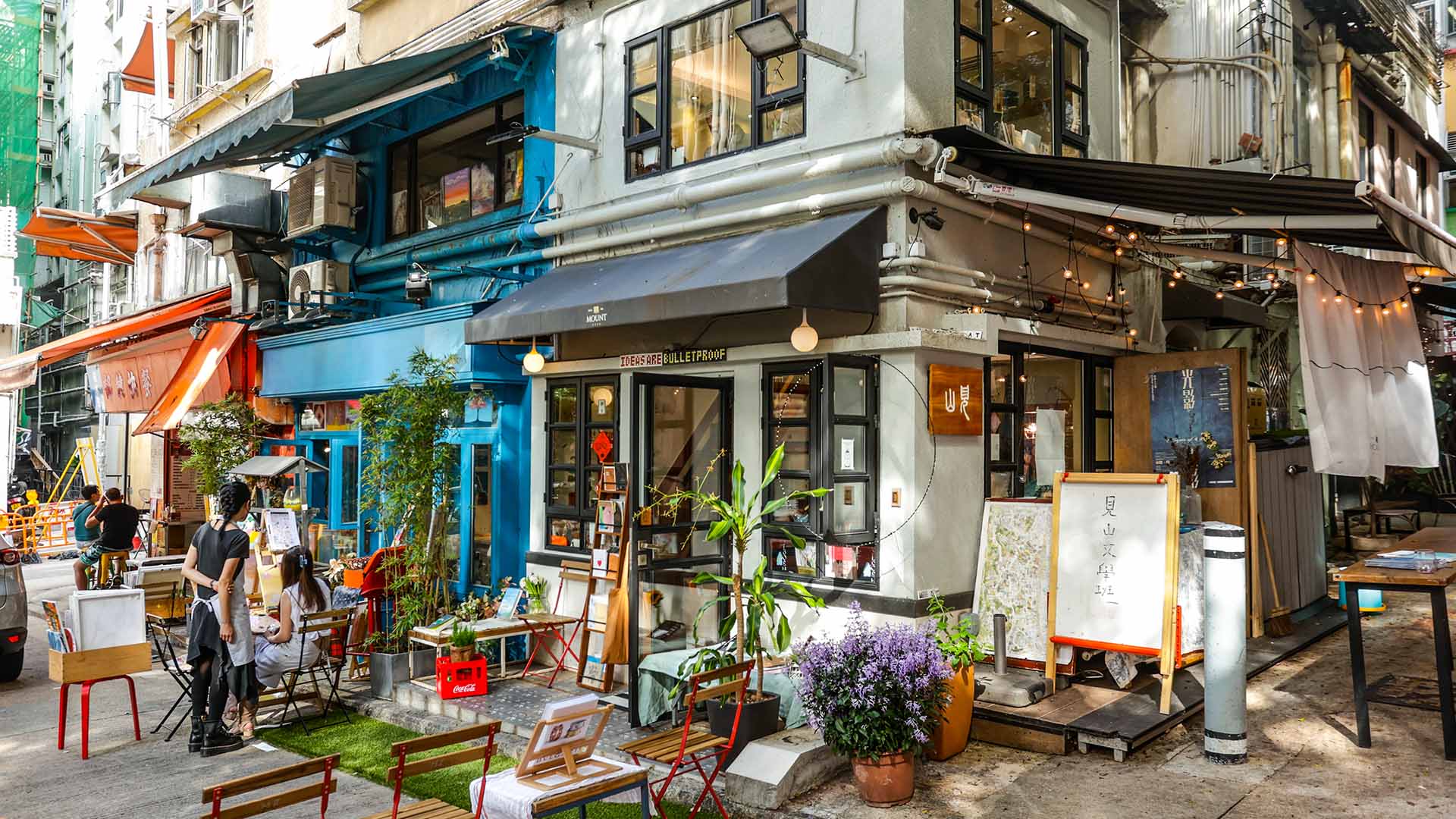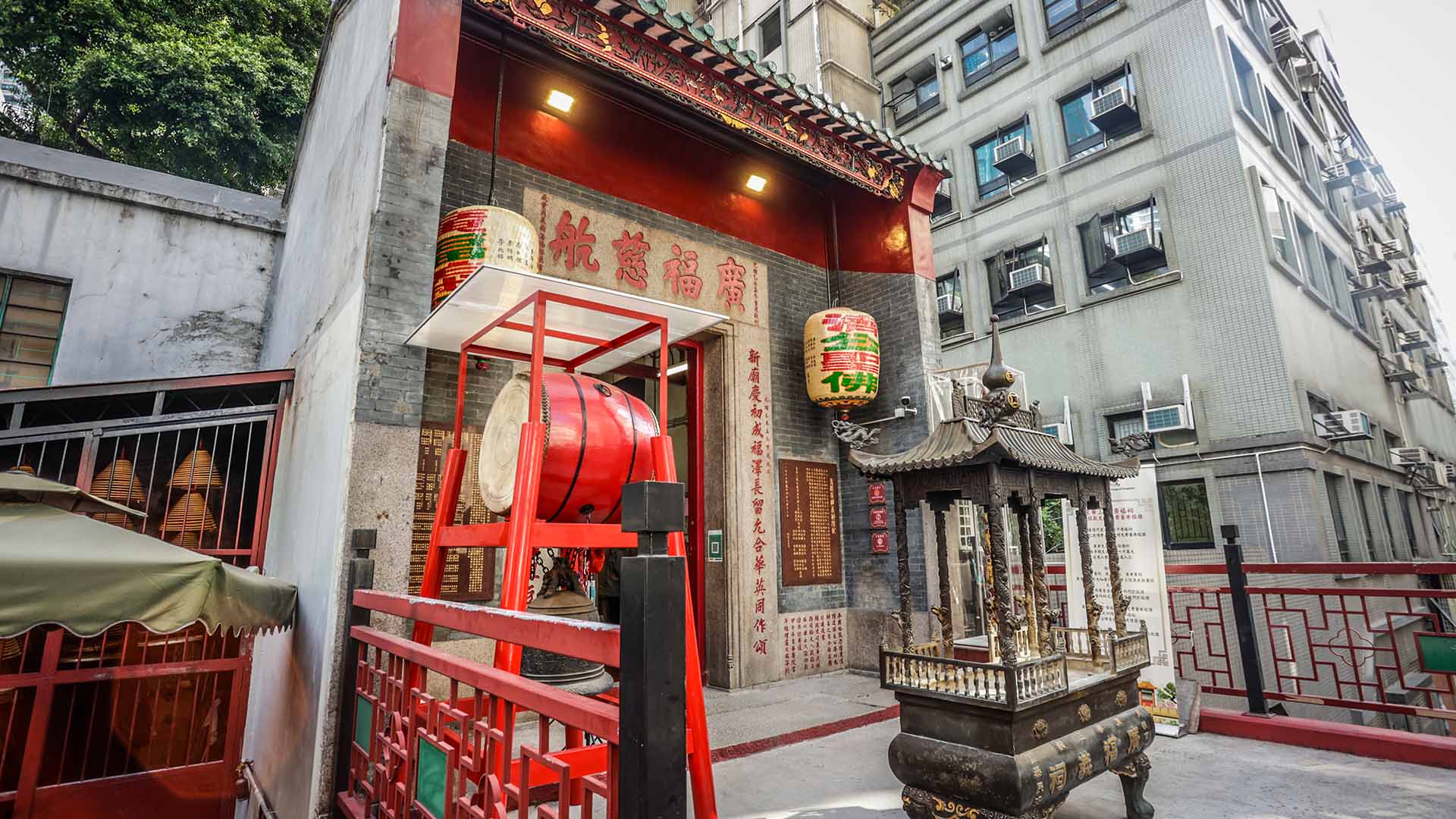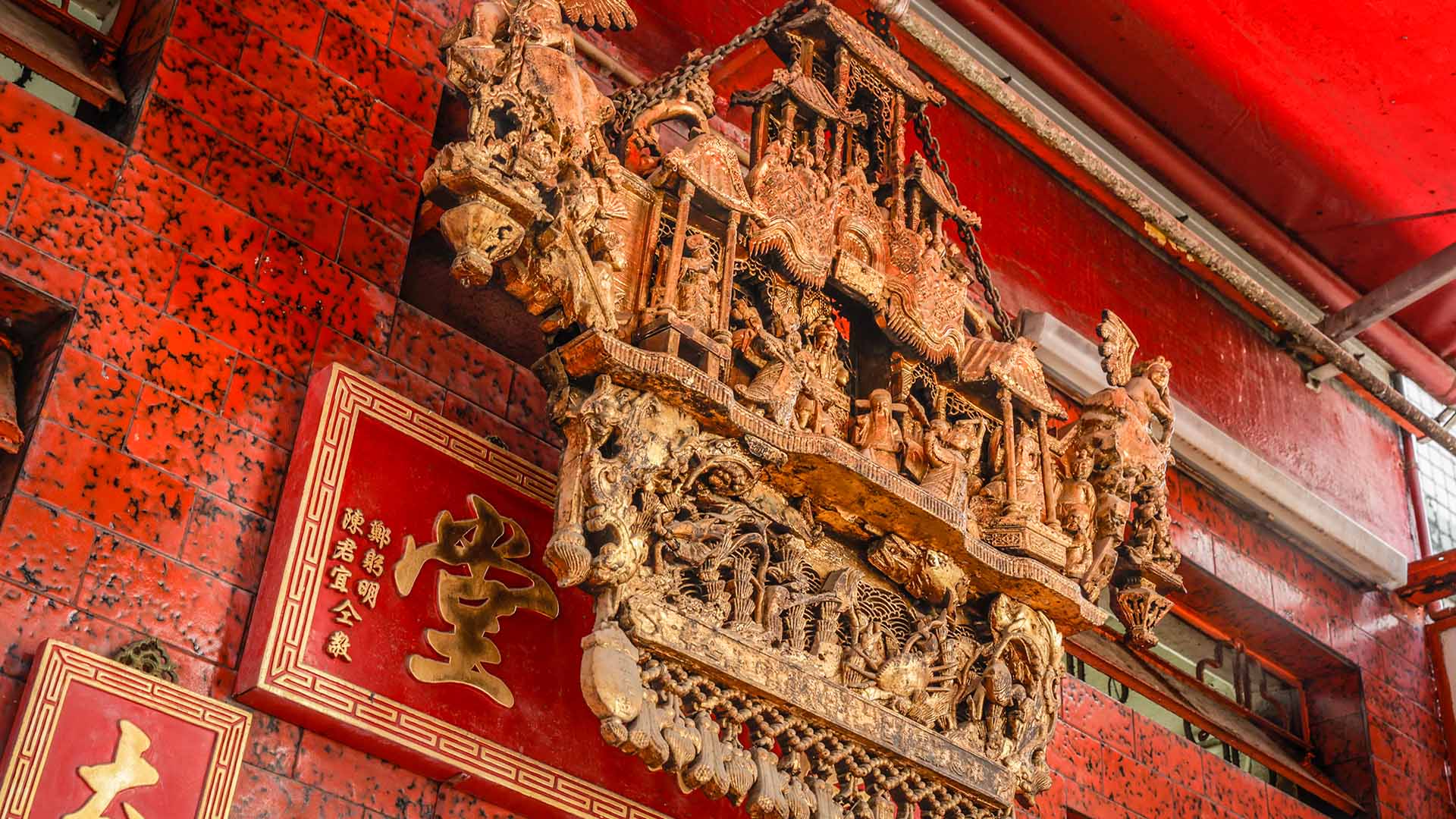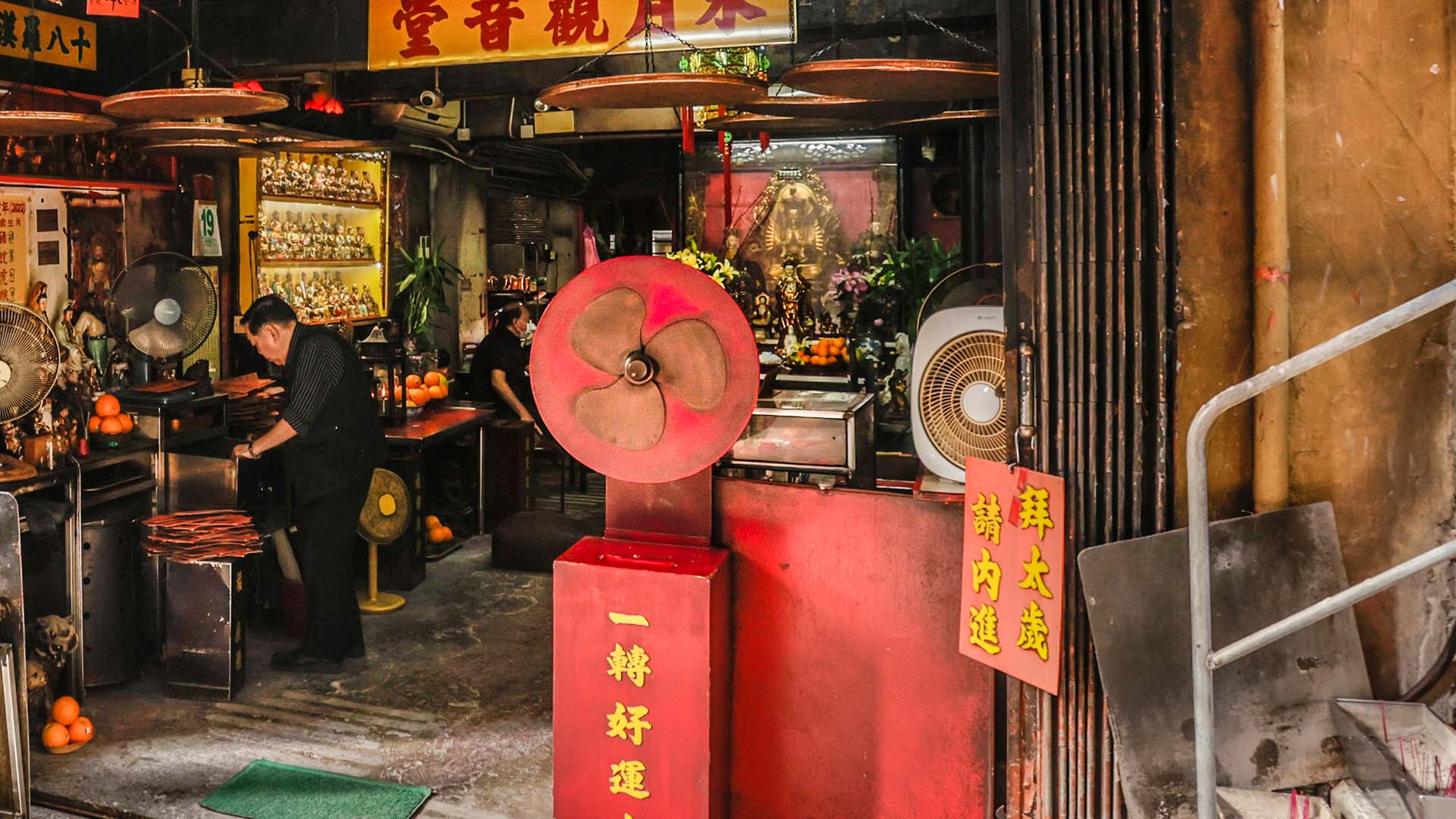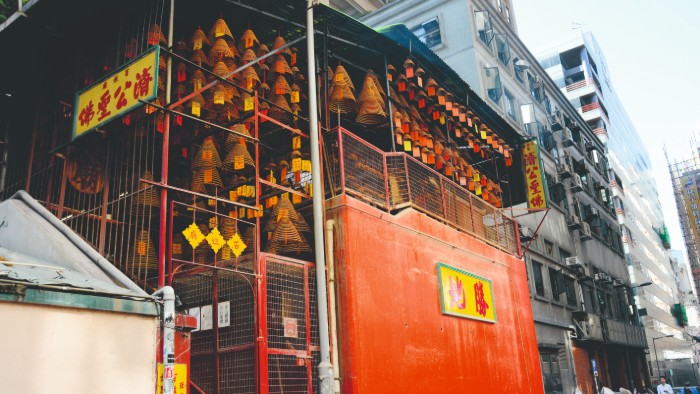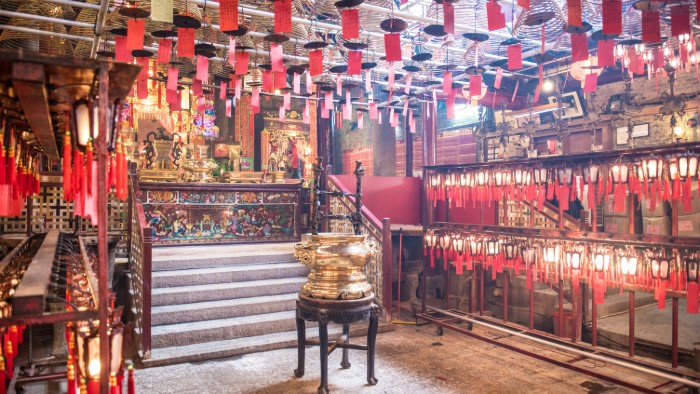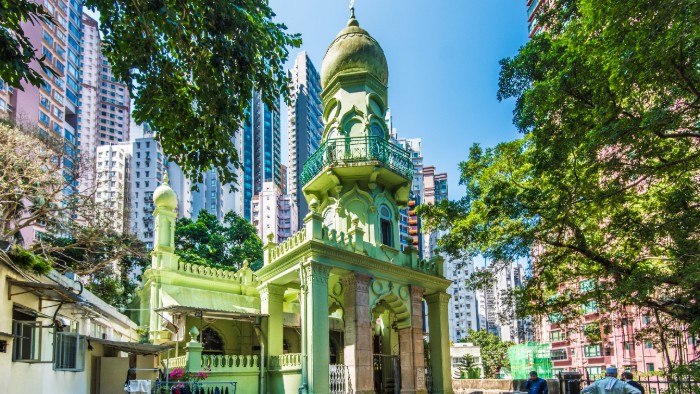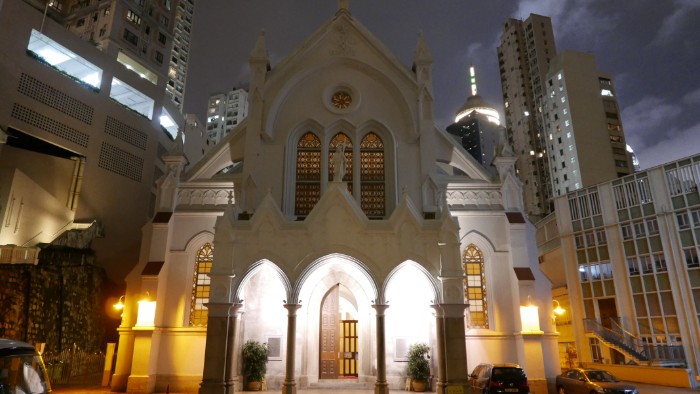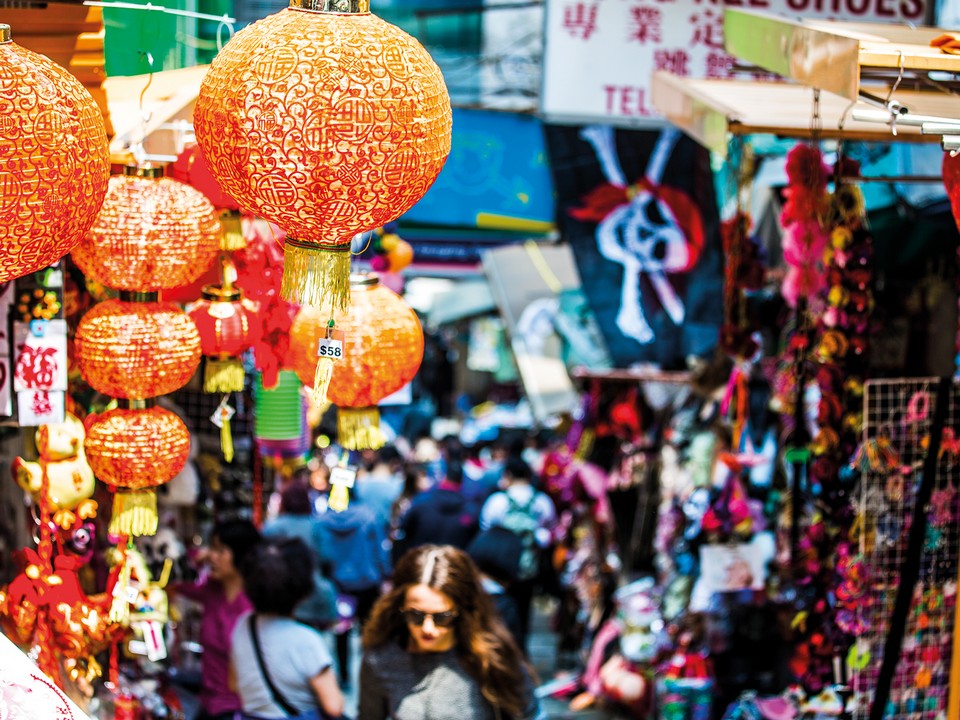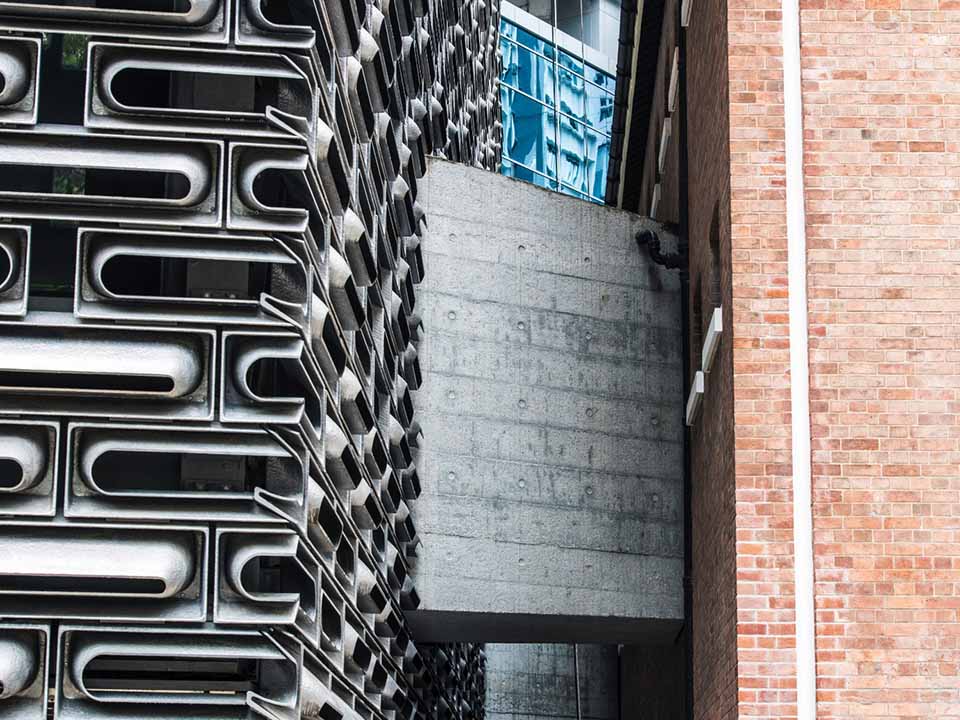Increase of duty-free allowance for luggage articles brought into the Mainland by Mainland residents travelling from Hong Kong takes effect from 1 July 2024. Click here for details.
Photography tips
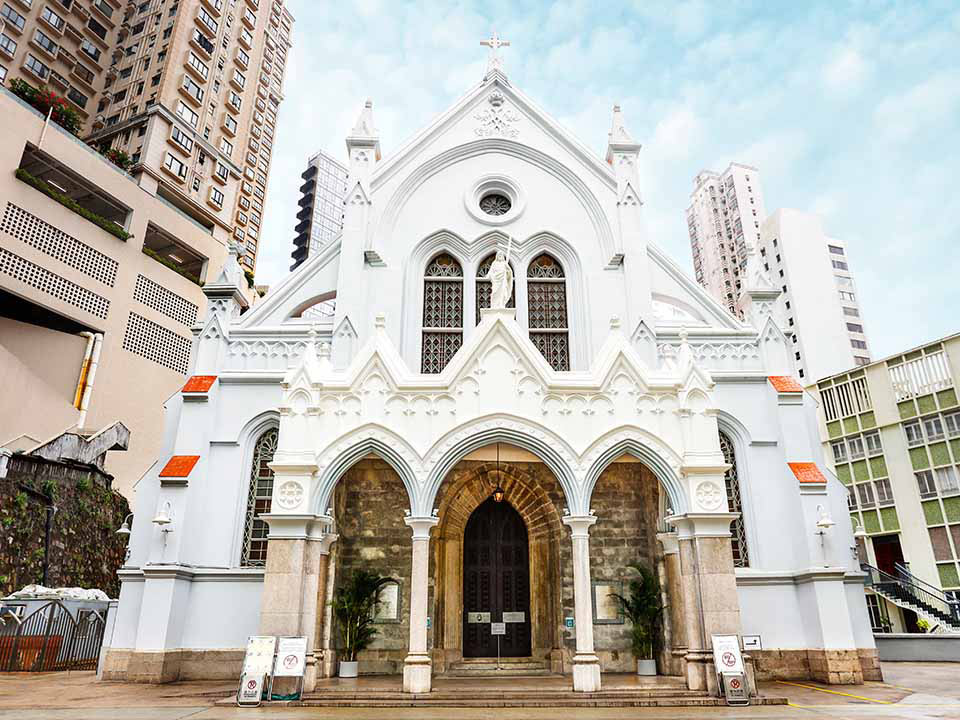
Stand in front of the cathedral and take a full length picture with your smartphone. Be sure to capture the Gothic architecture by placing your camera low (or ask a friend to hold it low) and shoot from a low angle. For extra atmospheric shots, take your photographs in the evening.
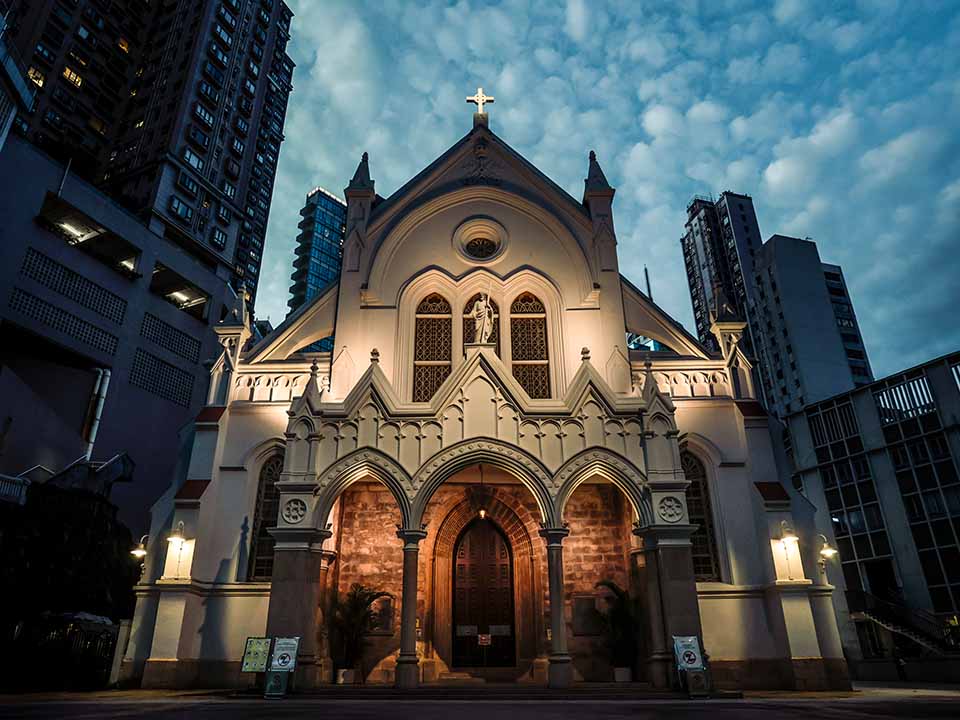
Fun facts
Did you know that Central Market housed 255 stalls in the 1940s and was the only meat market on Hong Kong Island? Shoppers could get fresh chicken, pork, beef and even horse meat, which was common in wartime Hong Kong. Today, you can still find the remnants of the past in the market, such as original stalls with concrete countertops and cast iron meat hooks.
Photography tips
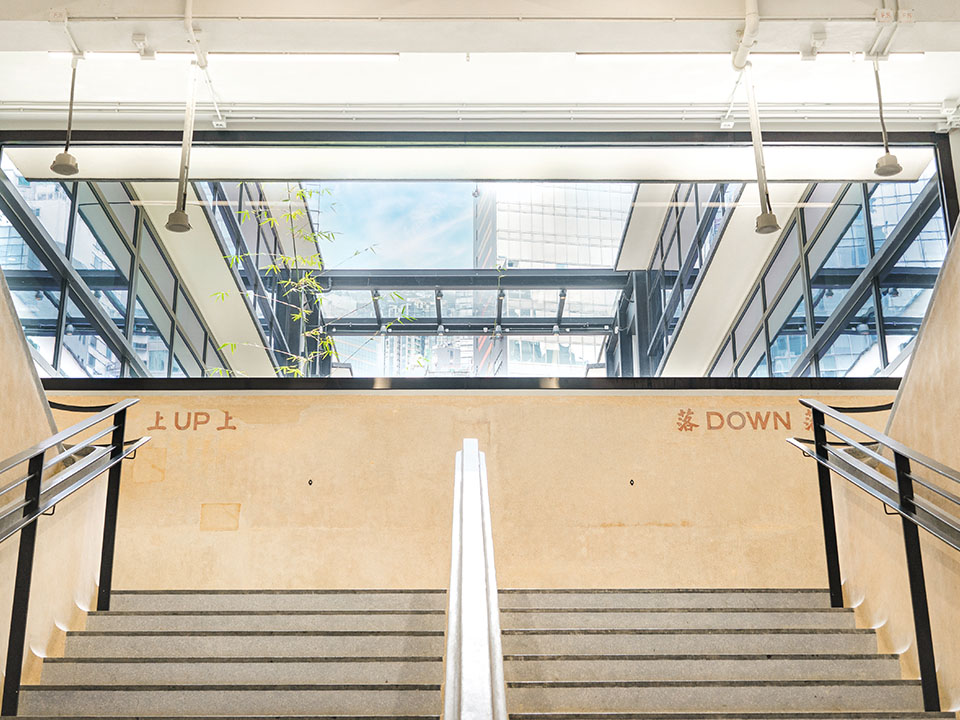
There is a long horizontal window just above the 'Up' sign on the staircase. Use it to capture a sliver of the sky for an abstract shot.
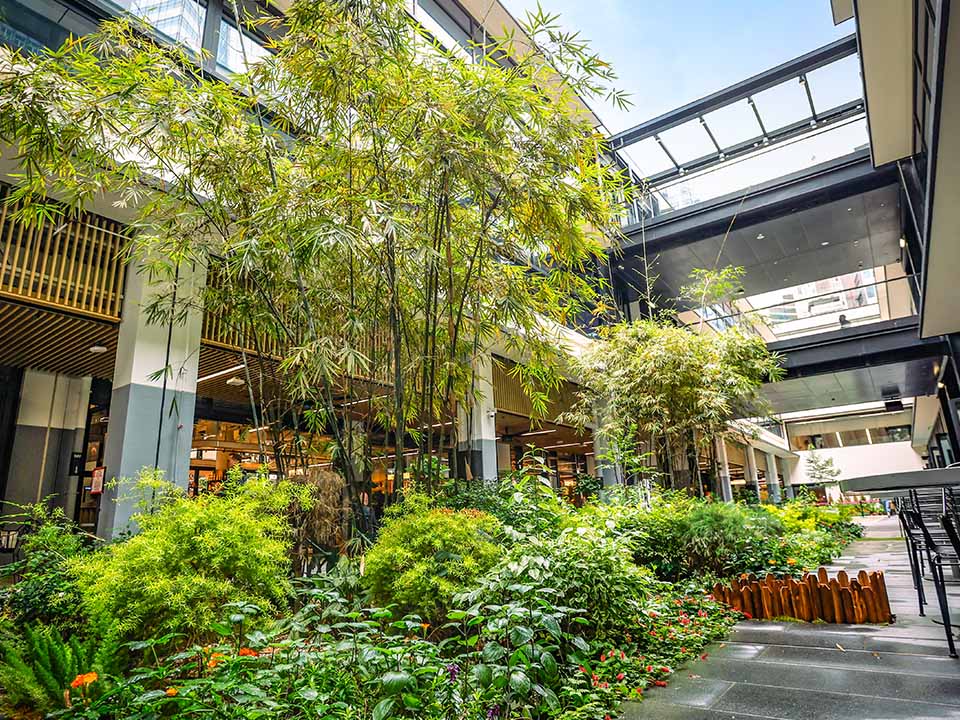
Other than the well-known objects like the staircase or the ceiling lamps, the greenery in the open-air public area of Central Market can also be the perfect backdrop for selfies or food shots.
Fun facts
Located off the bustling Gage and Peel streets, Pak Tsz Lane Park is an easily accessible tranquil spot that gives you a glimpse of its lesser-known history. This once-forgotten space was awarded the HKILA Silver Award 2012 under the landscape design category by the Hong Kong Institute of Landscape Architects, and is designed by the same architect (Ronald Lu & Partners) behind Hong Kong’s iconic Xiqu Centre.
Fun facts
Have you ever noticed a chimney-shaped post on the lower section of Pottinger Street (on the right-hand side if you look up), above Queen's Road Central? It was actually the ventilation pipe of a former public toilet, hidden among market stalls on the street. At the end of the 19th century, when Hong Kong's buildings didn't have flush toilets, public toilets were built underground in order to save space and improve sanitary conditions.
Photography tips
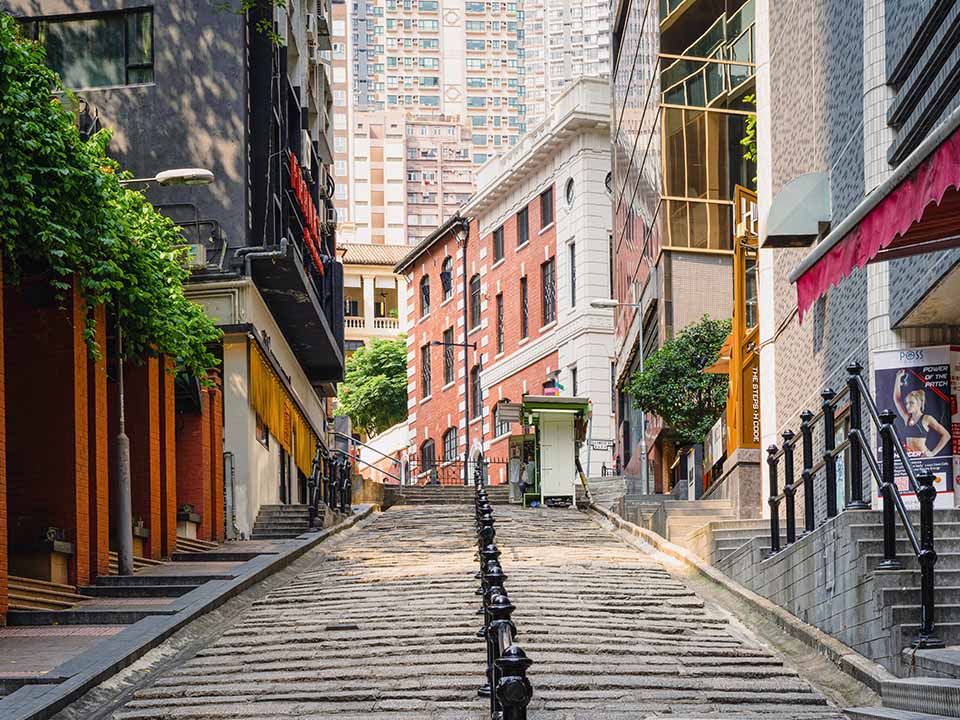
Stand near the top of Pottinger Street and photograph Tai Kwun together with the slopping street — two historic Hong Kong attractions — in one shot.
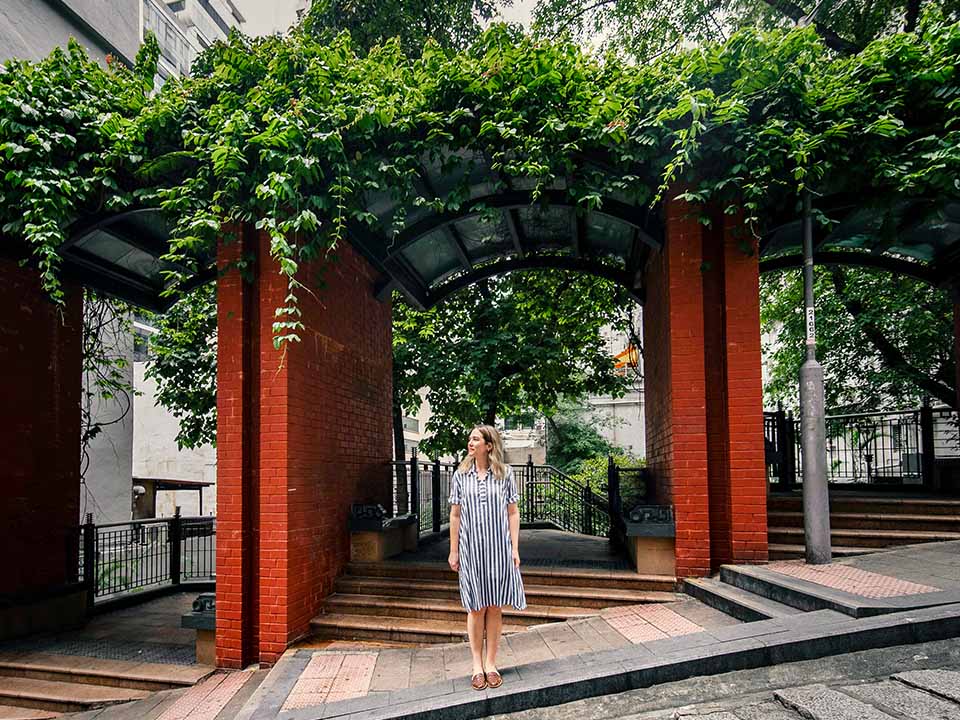
Lok Hing Lane Temporary Sitting-out Area, located near the top of Pottinger Street, provides an enchanting backdrop to your photos with four red brick pavilions covered in greenery.
Fun facts
Although Tai Ping Shan Street shares its name with Victoria Peak, locally known as Tai Ping Shan, they definitely don’t have the same incline! The neighbourhood is nicknamed PoHo not only because it’s near Po Hing Fong, but also because of the amount of hidden gems present in the area, as 'po' means treasures in Cantonese. There are several old temples around, too. They were one of the first structures built by Chinese immigrants who settled in Hong Kong in the late 19th century to bring communities together.
Insider’s tips
Touring the temples of Tai Ping Shan Street
- Look out for the statue of Kwun Yum and a historic choi moon – an auspicious boat-shaped sculpture – at Kwun Yum Temple
- Don’t forget to spin the wheel near the entrance of Shui Yuet (Kwun Yum Tong) for good luck
- Kwong Fook I Tsz, or Pak Shing Temple, is an ancestral home. You can pay tribute to Ksitigarbha Buddha and Ji Gong in the main hall, while the rear hall accommodates the memorials of the deceased.
Exploring Old Town Central is like taking a trip back in time. The neighbourhood, which encompasses Central and Sheung Wan, was where some of the earliest chapters of modern Hong Kong history unfolded. Today, more than 180 years since the British first settled at Possession Point, this district is still home to cobblestone streets, heritage buildings, traditional temples and other fascinating landmarks that illustrate its storied past and its early role in shaping the cosmopolitan city of Hong Kong as we know it today.
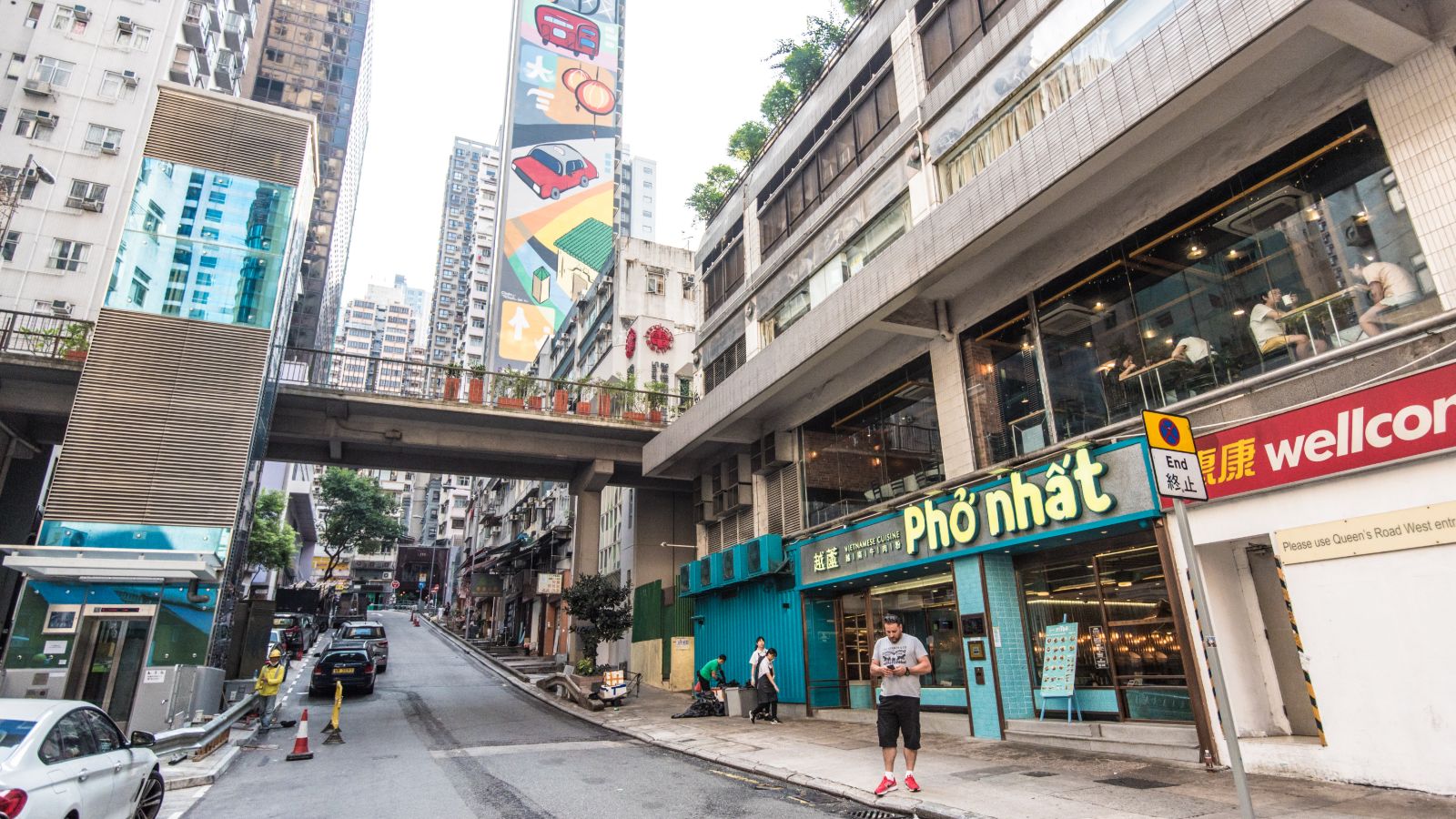
Possession Street
Ordinary as it may seem, Possession Street
{{title}} Address {{address}} Website {{website}} More info has a significant place in the history of Hong Kong. On 25 January 1841, the British navy arrived at nearby Possession Point (now Hollywood Road Park) and began 150 years of colonial ruled era, marked by a flag-raising ceremony the day after the initial landing. Originally perched on the waterfront, Possession Street was given a new lease of life through reclamation. The area is now dotted with hip restaurants and boutiques, alongside historic stores where you can still sample a taste of an older Hong Kong.
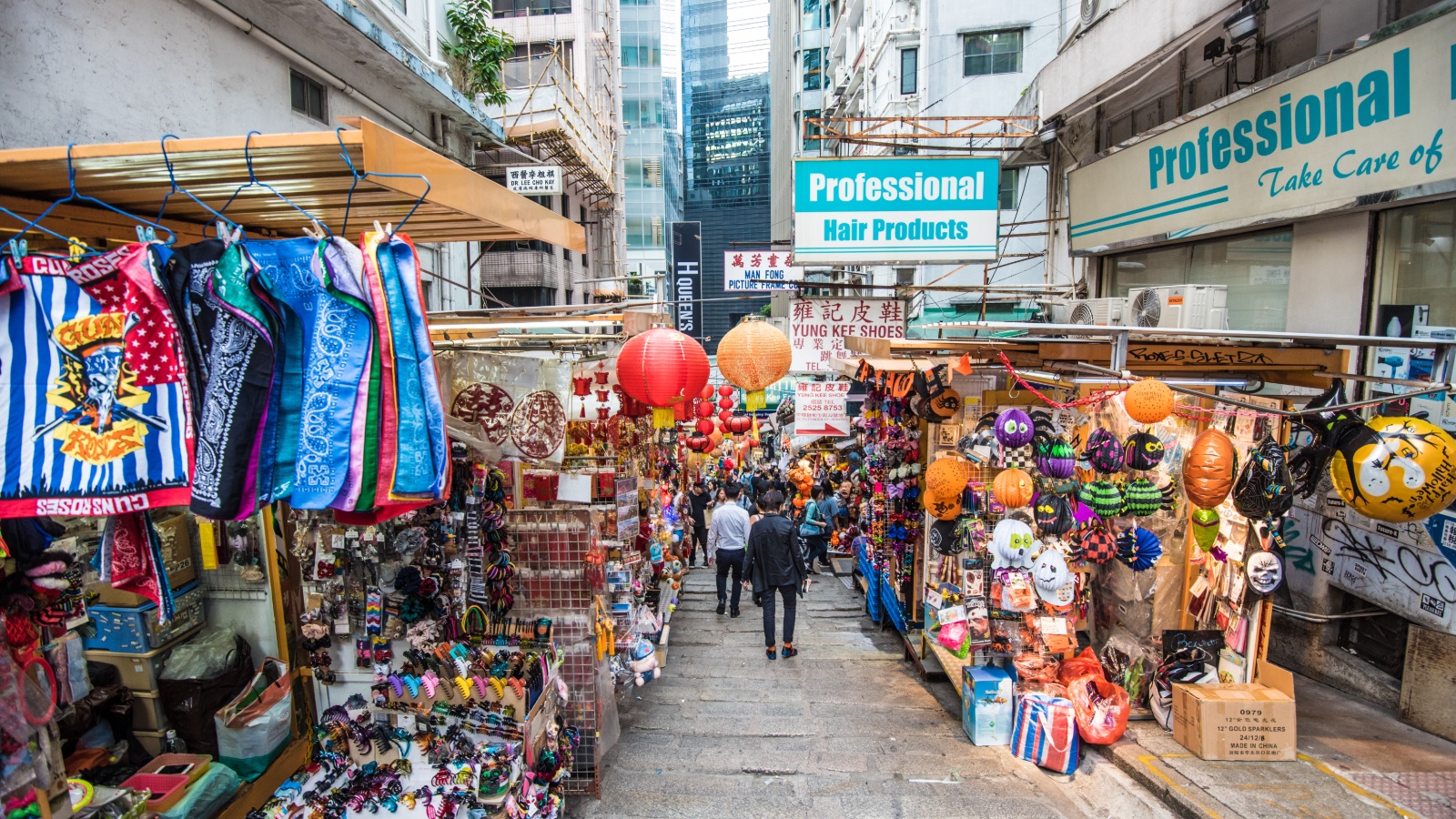
Pottinger Street
Pottinger Street
{{title}} Address {{address}} Website {{website}} More info and its surrounding area give a good sense of what the lives of Central’s early dwellers would have been like. The stone slabs spanning the entire street were laid in an irregular manner for a reason: some sections of this street between Hollywood Road and Connaught Road Central were particularly steep, and the uneven pavement made it easier for commuters and merchant-bearers to walk on while also allowing rainwater to flow down. Because of the unique design, locals still refer to it today as ‘Stone Slab Street’.
There were stalls on either side of the street when it was constructed in the 19th century. Originally, they sold household goods, or offered services such as shoe and pot repairing, as well as clothing alteration. Today, as consumer habits have changed, most of them sell festive costumes or handicrafts.
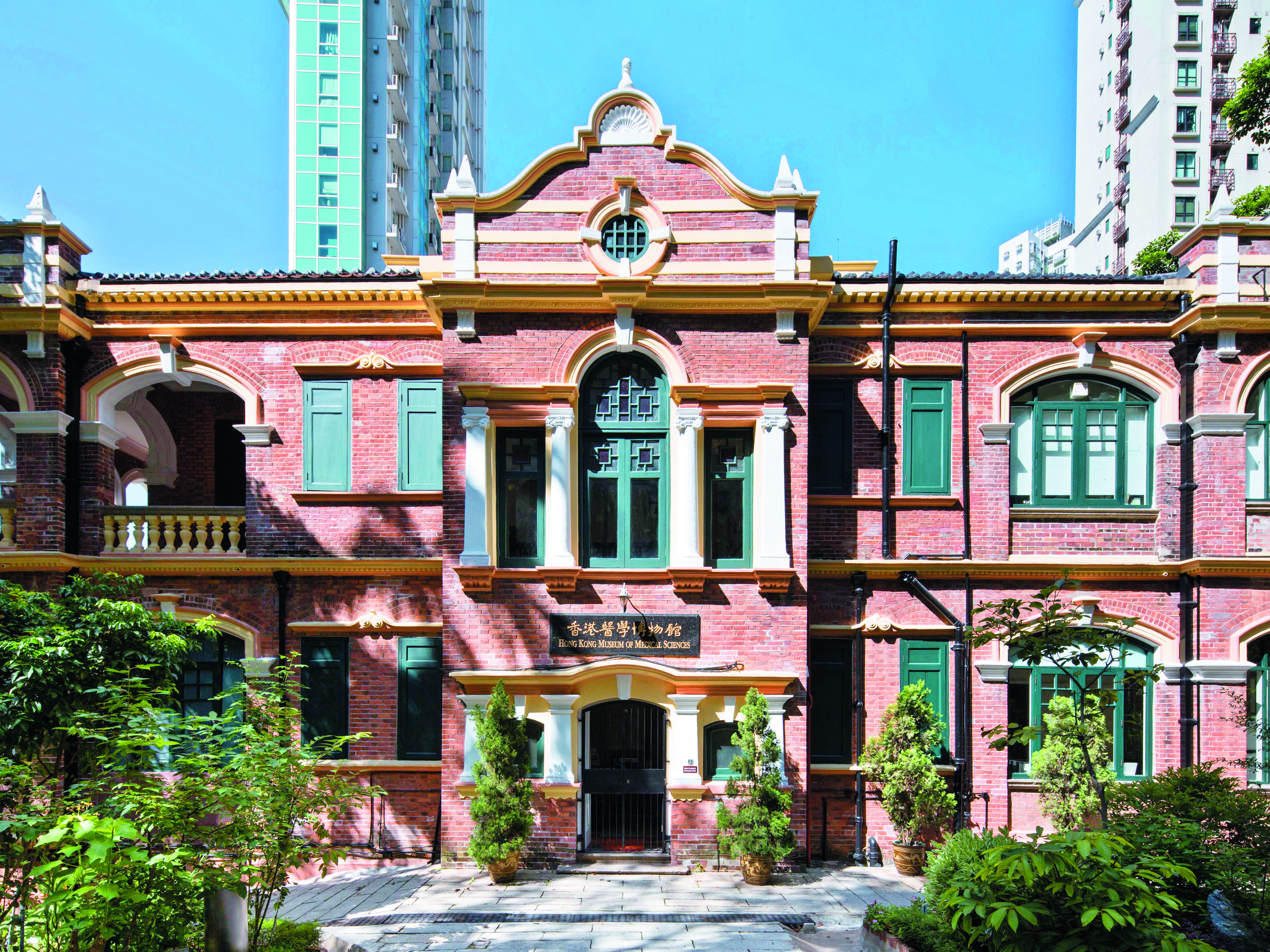
Hong Kong Museum of Medical Sciences ![]() {{title}} Address {{address}} Website {{website}} More info
{{title}} Address {{address}} Website {{website}} More info
This Edwardian brick building is a symbol of the development of medical sciences in Hong Kong. After the bubonic plague hit the city in the late 19th century, the government stepped up efforts in medical development, which eventually led to the establishment of the first bacteriology institute. The laboratory came into service in 1906 as the city’s first purpose-built clinical laboratory for public health, and the cornerstone of the development of medical sciences in Hong Kong. The museum now contains important exhibits on the city’s medical history and is the first institution of its kind to compare Chinese and Western pathologies.
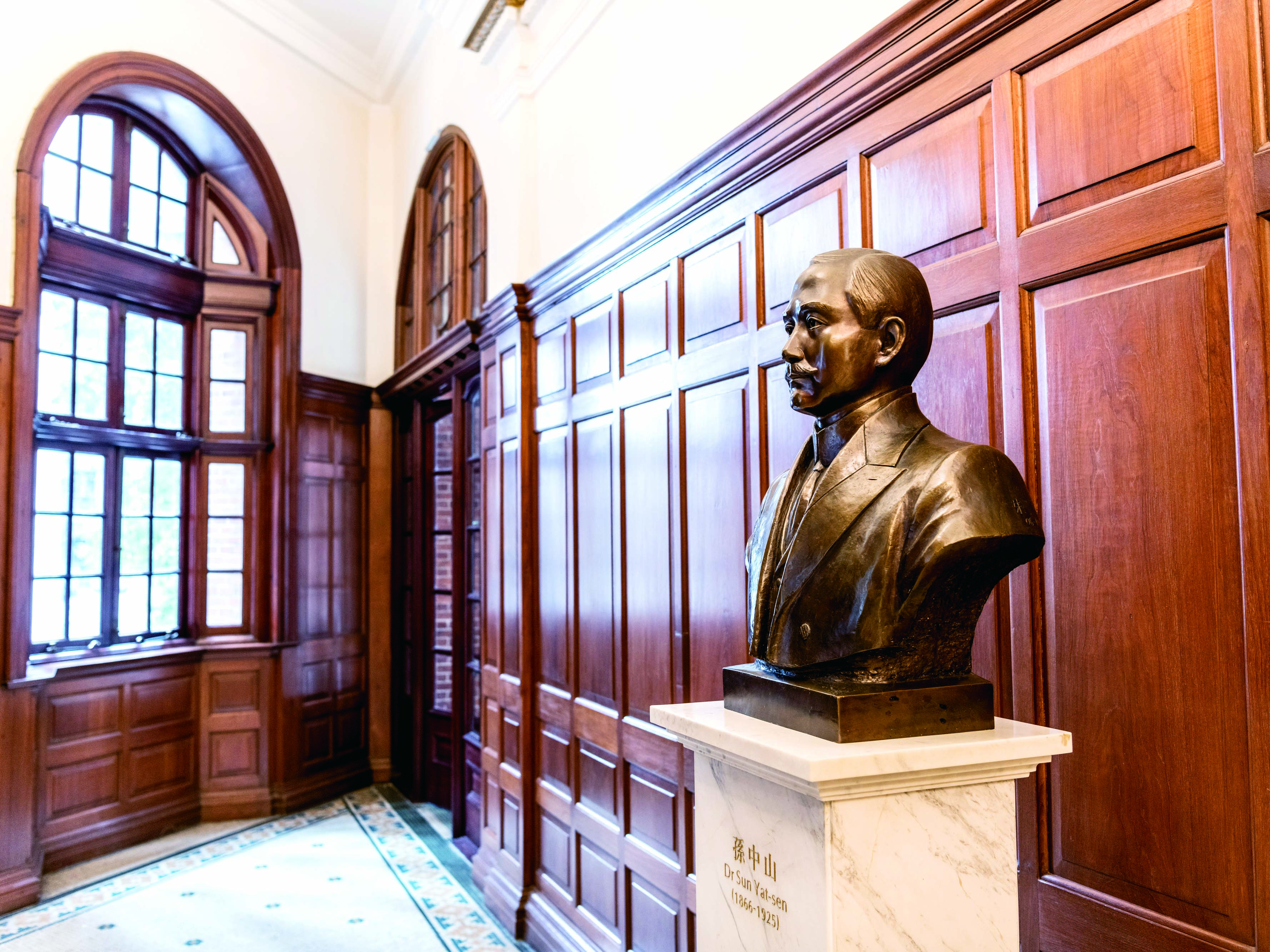
Dr Sun Yat-sen Museum
Despite its Edwardian-style façade – complete with Greek columns and stained glass windows – this four-storey museum is dedicated to the life and achievements of Dr Sun Yat-sen, who was an instrumental figure in the establishment of the Republic of China. Dr Sun Yat-sen Museum
{{title}} Address {{address}} Website {{website}} More info includes two permanent exhibitions that showcase artefacts from Dr Sun’s eventful life and career, and also highlights the statesman’s close ties to Hong Kong, where he received his secondary and university education and began to nurture some of his progressive ideas.
Chinese YMCA of Hong Kong, Bridges Street Centre
Hong Kong’s architecture was greatly enriched when Western and Chinese influences came together during the colonial ruled era. The Bridges Street Centre of the Chinese YMCA of Hong Kong
{{title}} Address {{address}} Website {{website}} More info , which is just steps away from the Hong Kong Museum of Medical Sciences, is a perfect case in point. Completed in 1918, the centre is a six-storey blend of Chicago School architecture and Chinese roofing techniques. In the early 20th century, it was a major social centre for the Chinese youth community and boasted enviable facilities, such as a fitness centre, restaurants and a hostel, as well as Hong Kong’s very first indoor swimming pool.
Tai Ping Shan Street
Walk up from Possession Street and you will find yourself at Tai Ping Shan Street
{{title}} Address {{address}} Website {{website}} More info . A number of distinctive ancient temples line the two sides of this 300-metre-long path. The most eye-catching of them all is probably the smoky, red temple called Kwong Fook I Tsz. Built in 1856, it is a classic example of a temple that fulfilled diverse roles. It was an ancestral temple for migrant families, a shelter for the ill and also housed memorial tablets for immigrant workers who passed away while in Hong Kong. Be sure to visit Kwun Yum Temple, which is still frequented by worshippers.
Man Mo Temple
A five-minute walk from Tai Ping Shan Street, Man Mo Temple
{{title}} Address {{address}} Website {{website}} More info is a stunning complex estimated to have been built more than 150 years ago. It comprises three blocks, each serving different purposes. The namesake structure, Man Mo Temple, pays tribute to the God of Literature and the God of War, while Lit Shing Kung was created for all heavenly gods. Finally, Kung Sor was an assembly hall for resolving community disputes.
A great place to visit for history lovers, the well-preserved historic building houses a bronze bell dating back to 1847 and a sedan chair from 1862. The structure itself is just as fascinating, and comprises granite pillars, granite door frames, engraved wood plaques and ancient mural paintings.
Jamia Mosque
You can easily recognise Hong Kong’s oldest mosque by its mint-green facade and gorgeous Islamic-influenced architecture. With its Arabic-style windows and gates, the Declared Monument stands out among its Mid-Levels surroundings. Aside from being a place of worship for Muslims in Hong Kong, Jamia Mosque
{{title}} Address {{address}} Website {{website}} More info is also an important historic landmark that dates all the way back to the 1840s.
Catholic Cathedral of the Immaculate Conception
The Catholic Cathedral of the Immaculate Conception
{{title}} Address {{address}} Website {{website}} More info was moved to this quiet Mid-Levels location after its previous incarnation was destroyed in a fire. Built in the late 1880s, the church is a stunning example of gothic architecture and was constructed in a cruciform shape with a central spire. The structure has been designated a Grade I historical building and was also also given an Honorable Mention by the UNESCO Asia Pacific Heritage Conservation Award in 2003 following its extensive renovation. Equally stunning inside, the cathedral is open for mass every Sunday and for public visitations from Monday to Saturday. Advance bookings are highly recommended.
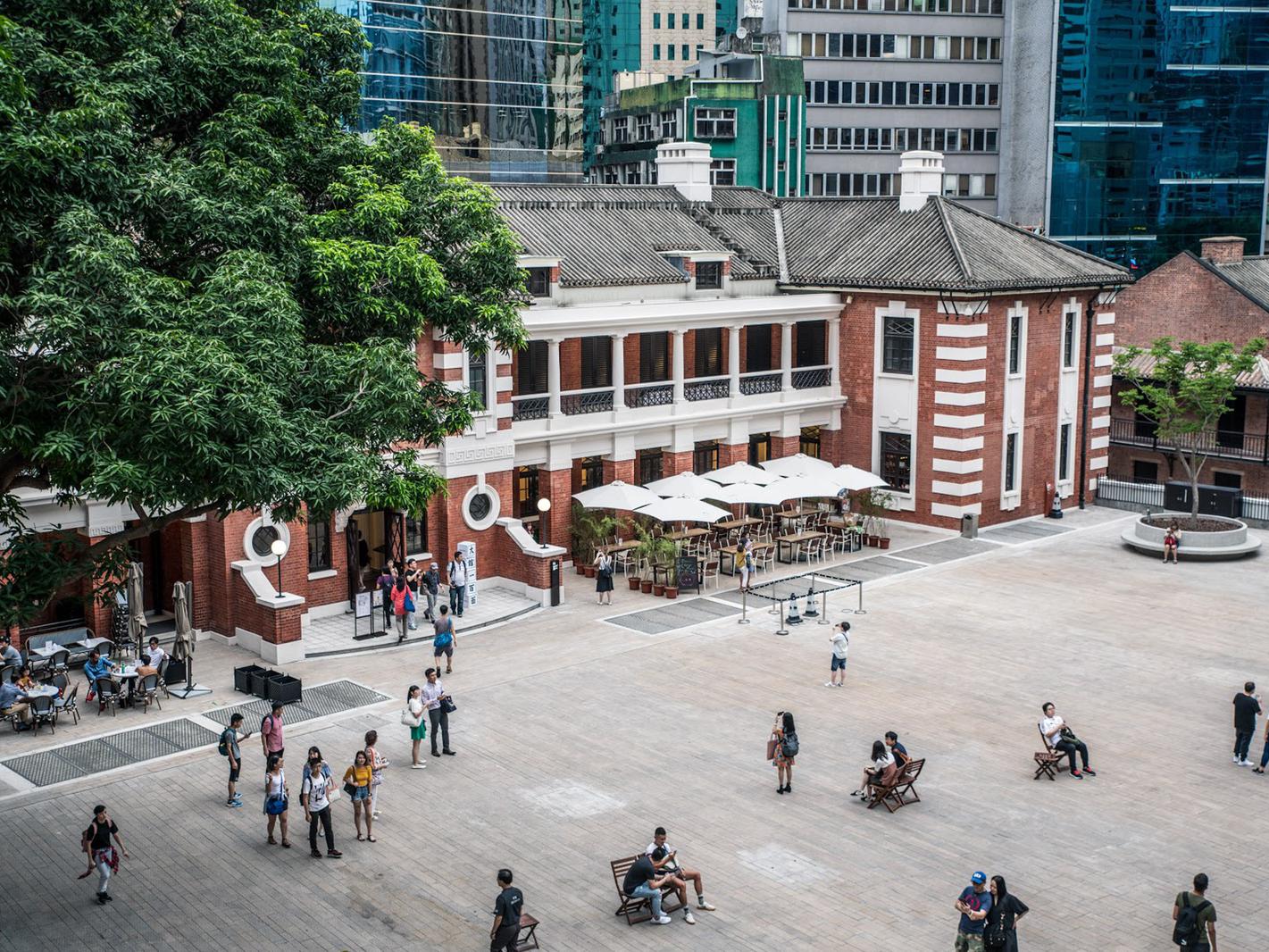
Tai Kwun
Tai Kwun
{{title}} Address {{address}} Website {{website}} More info , meaning ‘big station’ in Cantonese, was a nickname for the former Central Police Station Compound, which boasts a history of more than 170 years. The site comprises 16 heritage buildings – all magnificent works of architecture. The former Police Headquarters, for example, is a resplendent example of Neoclassicism while the barracks, built between 1862 and 1864, is known for its distinctive Roman-style arch.
Wonderfully preserved, the historical site has since been transformed into an arts and culture hub – and one of the largest conservation projects to date in Hong Kong. Along with two newly built structures, the original buildings now house art galleries, retail shops and various bars and restaurants. Tai Kwun also hosts curated art exhibitions, performances, workshops, film screenings and guided tours, so be sure to check ahead for schedules and details.
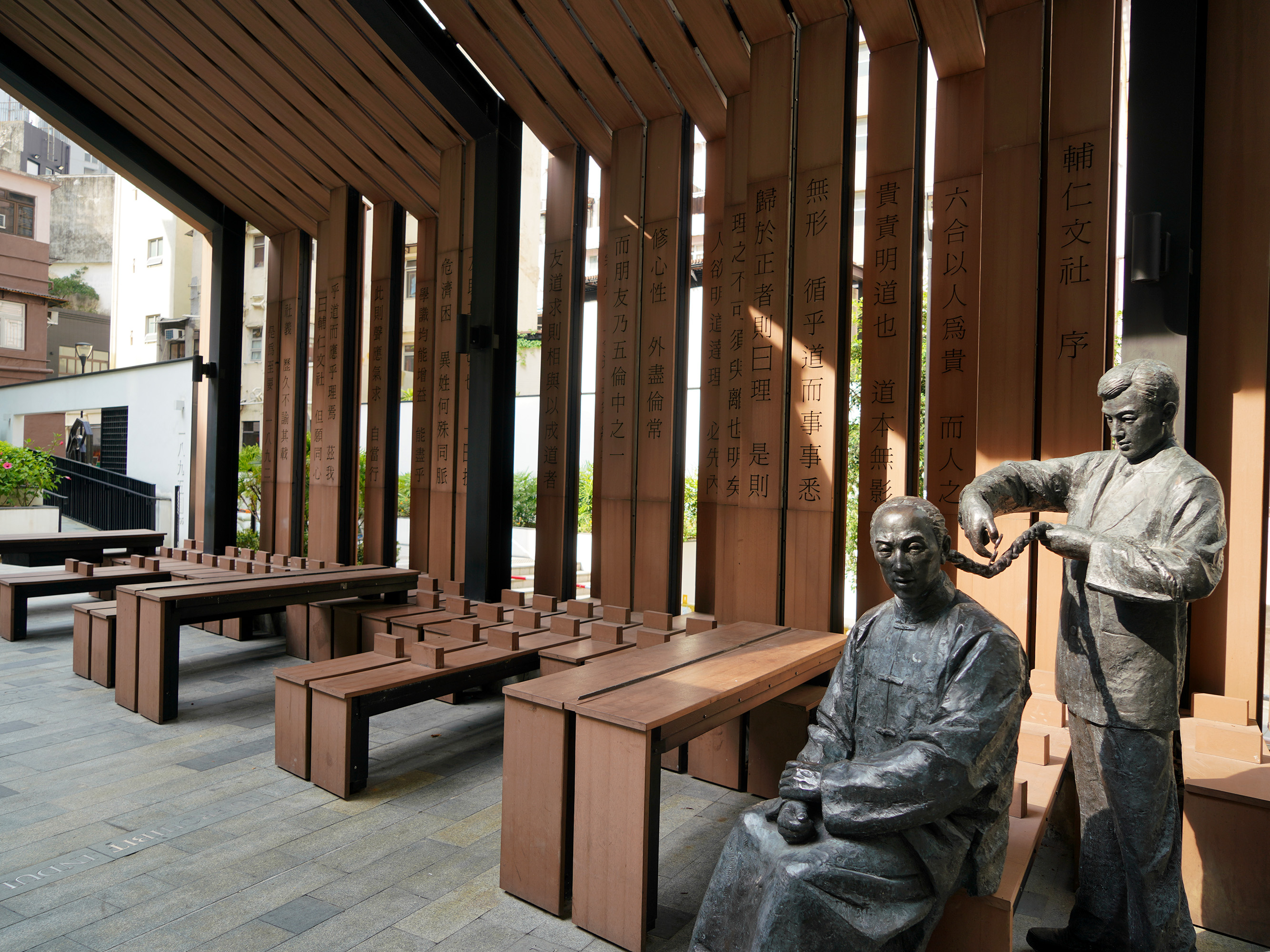
Pak Tsz Lane Park
From Tai Kwun, walk down Hollywood Road and you’ll soon reach Pak Tsz Lane Park
{{title}} Address {{address}} Website {{website}} More info , one of the 16 stops along the Dr Sun Yat-sen Historic Trail. This tranquil patch of green was built to commemorate the achievements of the Furen Literary Society, which was founded by revolutionary leaders Yeung Ku-wan and Tse Tsan-tai on 13 March 1892. The group eventually merged with Dr Sun’s Revive China Society and was heavily involved in the 1911 Chinese Revolution. Revitalised with an urban architectural design, this memorial park features exhibition panels, interactive facilities and an educational playground that traces the society’s history and revolutionary activities.
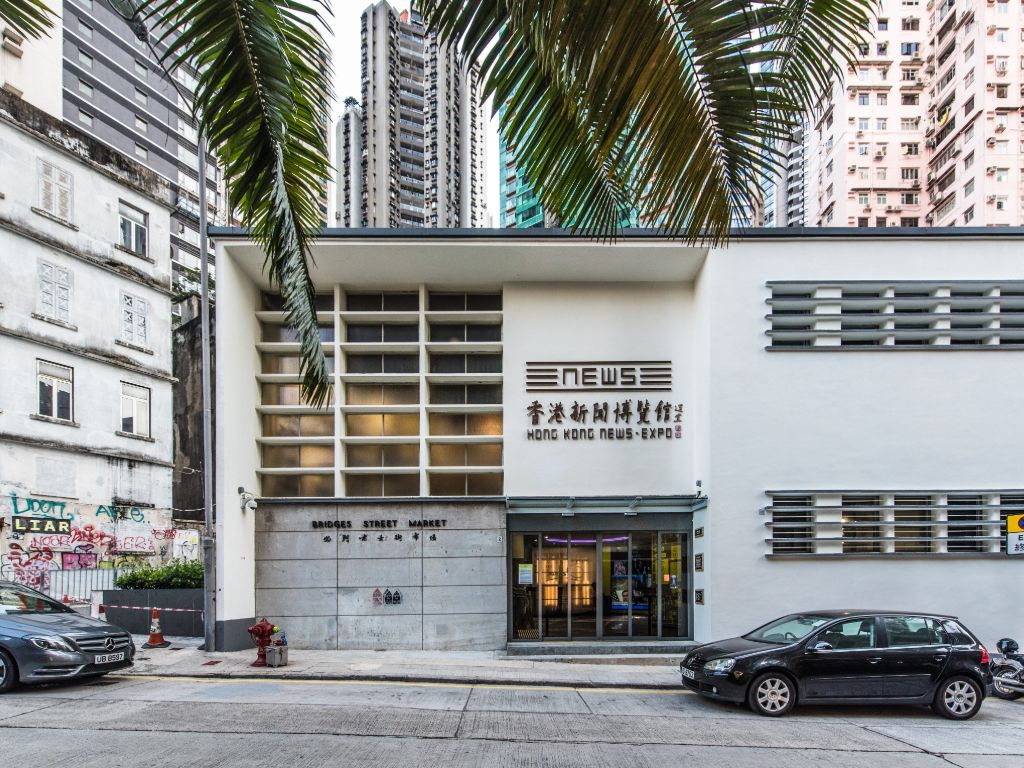
Hong Kong News-Expo
The former Bridges Street Market has undergone a massive transformation to become the Hong Kong News-Expo
{{title}} Address {{address}} Website {{website}} More info , Asia’s first exhibition and education facility to showcase and celebrate the role of media and journalism in Hong Kong. The Grade III historic building houses interactive exhibitions demonstrating the development of local media, spanning from its infancy in the form of newspaper and radio to television and digital media. Join the free seminars, workshops and guided tours for a deeper understanding and appreciation of Hong Kong press.
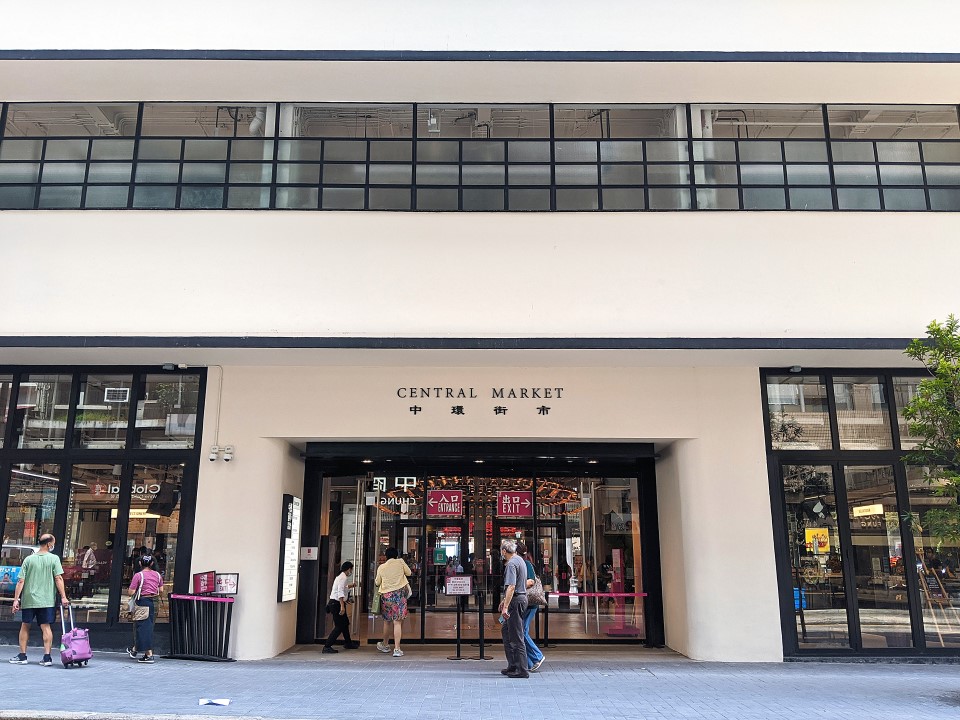
Central Market
One of the revitalisation projects under Urban Renewal Authority and managed by Chinachem Group, the revitalised Central Market
{{title}} Address {{address}} Website {{website}} More info is one of the latest developments in Central. Coveringover a 12,000-square-metre area, the Grade III historic building, located between Queen’s Road Central and Des Voeux Road, has been converted into a ‘Playground for All’, offering experiences and venues for dining and retail aimed at connecting the local community to the neighbourhood’s history, tradition, and contemporary culture.
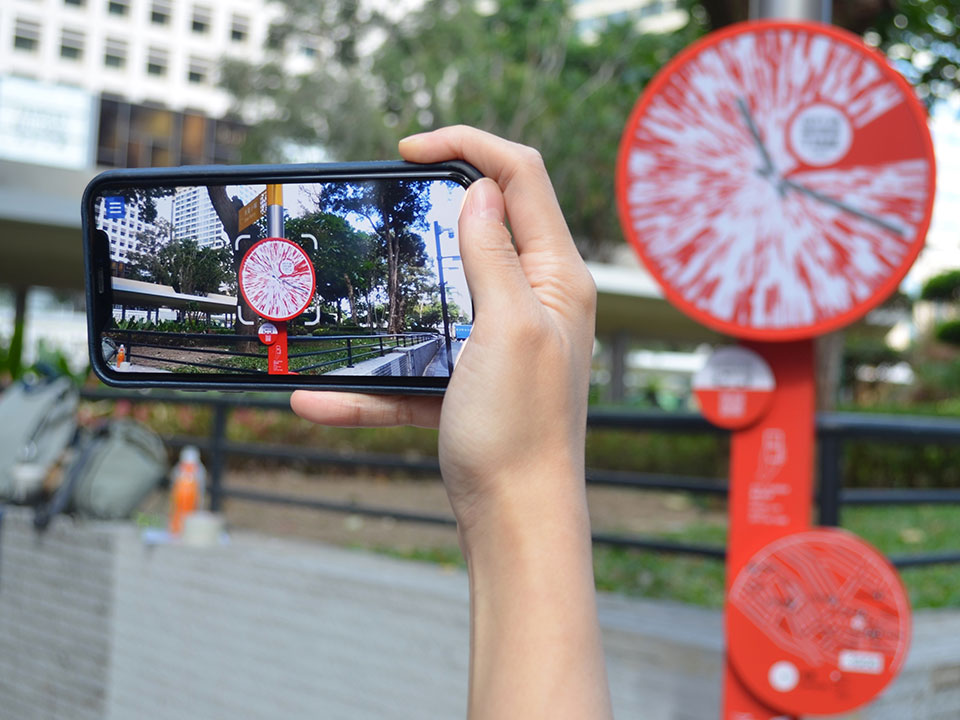
CITY IN TIME — Pottinger Street
At the junction of Pottinger Street and Hollywood Road, scan the decorated pole to download the CITY IN TIME app and travel to the 1930s to the area currently known as Tai Kwun, Pottinger Street and the nearby neighbourhood. CITY IN TIME
{{title}} Address {{address}} Website {{website}} More info brings Hong Kong’s extraordinary history back to life by transforming smartphones into magical ‘augmented reality’ windows, contrasting 360-degree panoramic images of old Hong Kong with today’s surroundings. The historical scenes are supplemented with lively animations, informative descriptions of major landmarks, and selfie and sharing functions for uploading to social media platforms. For more details about nearby scenes and the CITY IN TIME project, please visit their website.
Information in this article is subject to change without advance notice. Please contact the relevant product or service providers for enquiries.
The Hong Kong Tourism Board disclaims any liability as to the quality or fitness for purpose of third party products and services; and makes no representation or warranty as to the accuracy, adequacy or reliability of any information contained herein.



